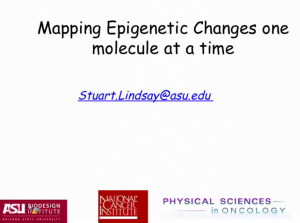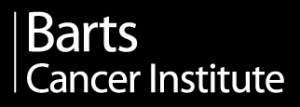April 22
2010
Biodesign Auditorium
727 E. Tyler St. Tempe
AZ 85287
The role of Bioinformatics in teasing apart epigenetics in cancer
Gene expression, cell specialization, and, presumably, the progress to cancer, are controlled by a heritable, but environmentally modifiable code that “lies on top of” the genome. This is called the epigenetic code. Some known epigenetic markings consist of chemical modifications of amino acid residues in proteins. For example, a lysine residue on a histone protein (a protein that packages DNA) may have an amine group replaced ay an acetyl group. DNA itself is also modified. The most well-known modification of DNA is the addition of a methyl group at carbon 5 of the cytosine base. Epigentic modifications change with tissue type, and, presumably between healthy and normal tissues. Epigentic markings may even be dynamic, changing over the cell cycle. They could even be random, forming part of a combinatorial selection system (rather like the immune system). For this reason, these markings need to be mapped at the single molecule level. We are developing methods to simultaneously image molecular structure and the location of epigenetic markings using a method we call “recognition imaging”. We are also developing a new single-molecule DNA sequencing technique that may prove sensitive to methylated cytosine bases.




